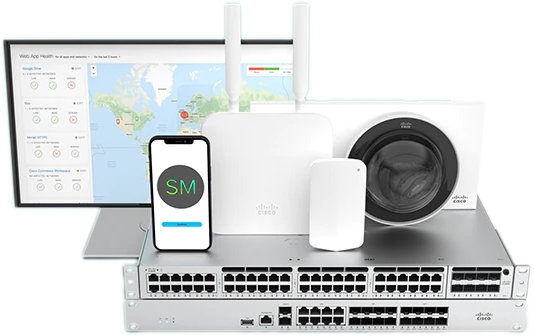As your business grows, your network will grow with it. Your LAN and/or WAN is the  nervous system linking the "body" of your business. If you're expanding to take over new buildings, you'll need to find a way to keep them connected through a single network.
nervous system linking the "body" of your business. If you're expanding to take over new buildings, you'll need to find a way to keep them connected through a single network.
There are plenty of ways to extend your LAN network, but here are three that should be affordable for most growing businesses.
Keep In Touch With Yourself Through Affordable LAN Extensions
1 - Run More Cable
If you want simplicity and security, hard-wiring your buildings together is the way to go. Whether you string the cabling along your elevated lines, or pay to have it buried, a solid "landline" is still more secure and reliable than any other way of extending your network. It cannot be hacked without great difficulty and nothing but severe physical damage will sever it.
Just remember that virtually all forms of network cabling have upper limits on their lengths. Standard copper "twisted pair" Cat-5 or Cat-6 cables can only be about 100 meters long before their signal begins to degrade. Beyond that, signal-boosting repeaters are necessary to prevent data loss.
upper limits on their lengths. Standard copper "twisted pair" Cat-5 or Cat-6 cables can only be about 100 meters long before their signal begins to degrade. Beyond that, signal-boosting repeaters are necessary to prevent data loss.
(Keep in mind, that's 100m in one direction. So Computer A and Server B could be a total of ~200m apart, if the router was directly in the middle.)
On the other hand, optical cabling is more expensive, but it A)offers far higher speeds, and B)can be run for 100kilometers without signal loss. Optical cables are also nearly impossible to hack undetectably, because any "tap" creates noticeable power loss, making them the most secure off-the-shelf option.
2 - Directional Antennas
If you don't want to deal with cables, directional antennas are your next best option. Available in a wide range of power levels, they're best used for extending a local area network across a large single campus, such as for colleges or hospitals.
Instead of the standard "bubble" created by a standard router, they use parabolic antennas to create a focused point-to-point broadcast.
Power and price are closely linked here: the further the antenna can transmit, the more it costs. High-powered antennas are basically only limited by the curvature of the Earth, and can transmit for many miles but, of course, are quite pricey. Look for a balance.
Physical disruptions can cause problems. Obviously, trees and other obstructions can block line-of-sight. Reflective metal, such as exposed aluminum siding on buildings, will also disrupt the signal.
Finally, broadcasting WiFi long distances over water is -at present- extremely difficult and expensive. The randomly reflective nature of choppy water quickly destroys the signal through interference, and only complex frequency-hopping can overcome this. If your property features a large body of water, you'll probably have to work around it.
3 - Lease Metronet Access
A "metronet" (or occasionally, "MAN") is just a specific term for a Wide-Area Network that's based around a city, since many larger cities these days already have a fiber architecture in place. If you want to link buildings on other side of a metroplex, often the cheapest way is simply to lease use of local optical cables from whoever owns them.
Line-of-sight disruptions and competing signal interference make it difficult to broadcast long-distance WiFi in a metropolitan area. Plus, of course, running new cables across a city can be nightmarishly bureaucratic and expensive. So, renting use of another network may leave you with a bit less independence, but will usually you save a lot of hassle.
Researching metronets is often a good job for local networking experts or telecommunications agents, since they're going to know offhand what physical networks are in place, as well as who owns them. Often they can match you up with a provider who will lease use of their equipment for a small fraction of what it would cost to set up your own.
And of course, for more advice, please contact us for a free consultation!









